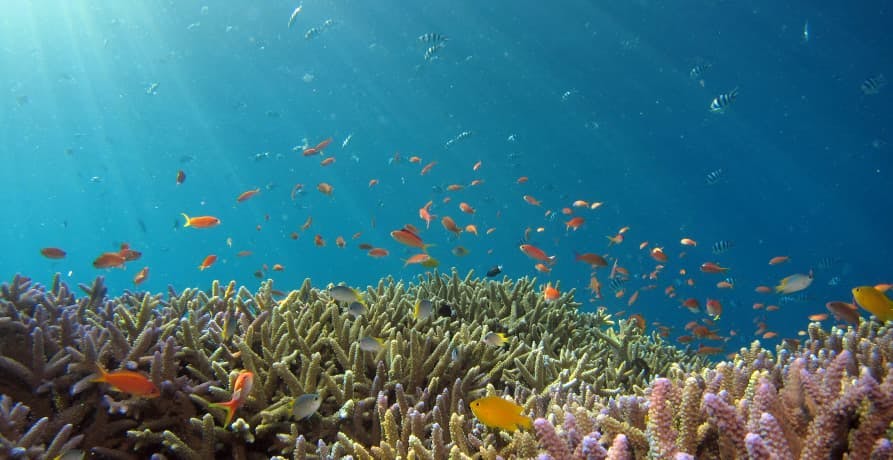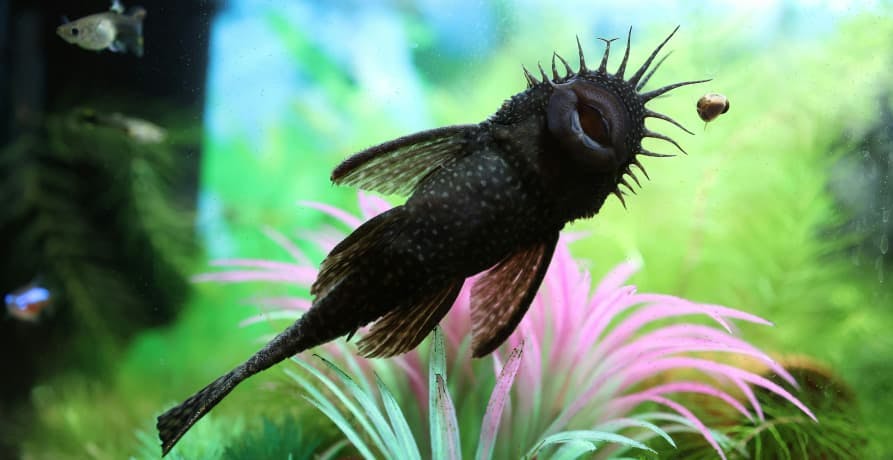ESG / CSR
Industries
What is Aquaponics?



In the midst of climate change, many of us are preoccupied with how rising global temperatures may impact farmers on land – but what about aquaponics and how global warming will affect our fish supply?
Aquaponics is the practice of using fish waste to enhance the growth of plants, which ultimately helps to create a more conducive environment for fish and other produce to grow and later be harvested.
In this article, we’ll explain what aquaponics is, why aquaponics is important, the pros and cons of aquaponics, and what the future holds for aquaponics.
What is aquaponics and how does it work?
Aquaponics works to ensure that the waste created on behalf of fish is then used to help supplement other plants or living organisms in the water, which provides a sustainable means to produce food.
💡 If we break down the word, “aquaponics” – “aqua” means water and “ponics” refers to growing or working to create something. Therefore, when put together – aquaponics depicts the effort of growing plants in water to benefit fish as well.
Think of it this way – fish food and fish waste accumulate in a body of water overtime, and if it isn’t cleaned regularly, it could compromise the livelihood of the fish themselves. That’s why when you have pet fish at home in a fish tank, many people choose to install an automatic cleaner – but the ocean or a lake doesn’t have this. As a result, these bodies of water must rely on the living organisms and plants in the water to clean the water for the fish.
There are three main methods used to filter the water for aquaponics:
- Raft – Also referred to as a float or a deep channel, this form of aquaponics works to keep beneficial plants separate from the toxic elements found in the water.
- NFT – This method of aquaponics, also known as Nutrient Film Technique, words to grow plants in channels.
- Media-filled beds – The last main method used for aquaponics makes use of a container filled with gravel as the plant bed, and then periodically fills and drains the tank to keep toxins out of the water.
Regardless of which method of aquaponics is used, all of these methods ultimately work by enhancing the already existing nitrogen cycle – which starts when ammonia (toxic to the fish) accumulates in the tank, which then turns into nitrite, and where nitrobacter can transform the nitrite into nitrate, which can be used as nutrients for aquatic plants.
👉 These aquaponic systems can be made in various sizes in order to accommodate various bodies of water – including freshwater or oceanic-like conditions with high content saltwater.

Why is aquaponics important?
Aquaponics is important because it helps to address the issues associated with climate change and aquatic life, including soil degradation, water scarcity, and how shifting weather patterns may impact our traditional methods of harvesting fish and other produce.
Here are a few more reasons why aquaponics is important:
- Sustainability – Aquaponics helps to promote sustainable and efficient methods to ensure that fish and aquatic plants can maintain their vitality.
- Global Food Supply – Aquaponics can make the production of fish more sustainable and boost worldwide food supply.
- Energy Efficiency – Aquaponic systems can help demonstrate the importance of incorporating energy efficient systems within various business models, as aquaponic systems themselves can be powered with the use of renewable energy and help businesses centered on aquatics to reduce their carbon footprint – and encourage other industries to do the same.
👉 Ultimately, aquaponics allows three main components, including fish, nitrifying bacteria, and plants – to thrive off of one another and work together to boost their chances of survival in the midst of climate change.

What is the main difference between hydroponics and aquaponics?
The main difference between hydroponics and aquaponics is that hydroponics works to grow plants without viable soil through the use of nutrient solution, whereas aquaponics focuses on growing plants in conjunction with current fish populations.
Here are some of the additional differences between hydroponics and aquaponics:
- Aquaponics uses fish waste whereas hydroponics uses chemical nutrients;
- Aquaponics is more productive than hydroponics because it utilises waste from both fish and plants;
- Aquaponics is more difficult to set up, but offers requires less monitoring and management in comparison to hydroponics, which requires more maintenance over the long-term despite the fact that it’s easier to set up than aquaponics;
- Aquaponics usually demands a higher start-up cost in comparison to hydroponics, as aquaponics requires the use of fish tanks and stronger management.
👉 Both aquaponics and hydroponics are both soilless methods to grow plants, can be set up indoors, and can both yield better results than traditional methods used to grow plants.

What are the pros and cons of aquaponics?
There are several pros and cons to aquaponics, including helping to boost energy efficiency, global food supply, and preserve the aquatic ecosystems – but aquaponics can also face challenges such as the initial start-up costs can be expensive and the lack of crop variety.
Here are some of the pros of aquaponics:
- Prevents Waste – Normally, the waste produced by fish in the water would harm them and surrounding organisms – but aquaponics transforms that waste to be used as nutrients for surrounding plants. In a sense, aquaponics can be related to the concept of upcycling – as fish waste is given a second life to be used for beneficial purposes.
- Used as Fertiliser – Not only does aquaponics help to mitigate fish waste, but it can help other aquatic organisms and plants to thrive – as aquaponics seeks to use fish waste as fertiliser. These aquatic plants also help to keep the water cleaner for fish, meaning that both aquatic plants and fish will benefit from aquaponics.
- Boost Biodiversity – Especially in the midst of climate change, seeking to boost biodiversity is more important than ever – seeing as it can help to promote healthy ecosystems and fight against climate change itself. Aquaponics can help to support biodiversity as it works to curate a wider variety of fish and plant species through a closed-loop environment.
- Adaptable to Specific Environments – Although aquaponics requires ample time to be properly set up, the overarching benefit of aquaponics is that it can be manipulated to accommodate various environments and prove most effective regardless of the surrounding climate or current constraints.
- Reduce GHG Emissions – If more aquaponic farms are to exist moving forward, it can prevent the need for more delivery trucks to travel long distances and ultimately reduce greenhouse gas emissions. In addition to this, aquaponics can offer consumers a “farm to table” approach for their food.
- Improved Water Efficiency – Aquaponics can help to reduce water usage, seeing as this method of growing plants uses 90% less water in comparison to traditional agriculture practices.
- Year-Round Produce – Since aquaponics can be set up indoors, external weather conditions won’t have an impact on the produce or fish being harvested under aquaponic systems and helps to mitigate seasonal unavailability.
Here are some of the cons of aquaponics:
- Limited Crop Variety – Although aquaponics doesn’t prevent the cultivation of a wide variety of crops, it can be harder to pertain the current aquaponic set up to be effective for each plant species – as different nutrients and space constraints may be required. Therefore, aquaponics is likely to be most successful when dealing with only one plant species.
- Daily Maintenance – Even after aquaponics have been set up, consistent monitoring and managing will be required to ensure that the current set up remains effective for both the fish and plants as they build an interdependent relationship with one another.
- Initial Start-Up Costs Are High – Aquaponics aren’t ideal for companies without financial resources, as the costs required to implement an aquaponic system and conduct preliminary studies to determine the right aquaponic system for your business can both prove expensive.
- Risk of System Failure – Even with expensive equipment and sufficient expertise, aquaponic systems remain sensitive to changes in water quality, temperature, and pH levels – all of which are easily affected by climate change and sporadic weather patterns. This is why consistent monitoring and maintenance is crucial for aquaponics.
👉 While it’s true that aquaponics presents several challenges, these can often be avoided with consistent monitoring and management.

What does the future hold for aquaponics?
The future for aquaponics looks bright as scientists and researchers gain new knowledge on aquatic trends and new technologies continue to be developed.
Here are some reasons why the future looks bright for aquaponics:
- New research and technological advancements will help to boost the popularity of aquaponics
- Global aquatic production increased by 27.5% between 2010 and 2018, and seeing as even more technology is available now and in the coming years – this number can be expected to skyrocket with aquaponics
- Breakthrough studies in plant genetics and breeding will help to curate even more favorable conditions for aquaponics
💡 In fact, there have already been two successful aquaponic programs – such as the Oasis Farm & Fishery and Emerge Aquaponics.
Oasis Farms
Located in Pittsburg, Philadelphia – Oasis Farm & Fishery makes use of both aquaponic and hydroponic systems to grow local and abundant produce.
Oasis Farms even offers classes for nearby residents to learn more about their aquaponic system and how it aids in food production!
Emerge Aquaponics
Based in the Colorado Springs area, Emerge Aquaponics makes use of aquaponic systems to produce fresh lettuce for the state. They offer their produce to wholesale sellers in addition to local customers.
Has aquaponics started to pique your interest?
Here’s what your company will need if your looking to get started in aquaponics:
- Determine your goals and objectives as aquaponics may not be the most successful sustainable practice for your business
- Allocate sufficient space to build your various aquaponic systems
- Crunch the numbers and determine your overall budget for your aquaponic system
Overall, aquaponics can help us to support fish life, reduce water usage, promote energy efficiency, and ultimately – demonstrate to the world that it's possible to curate sustainable food production with the help of tactics such as aquaponics.
What About Greenly?
If reading this article about aquaponics has made you interested in reducing your carbon emissions to further fight against climate change – Greenly can help you!
At Greenly we can help you to assess your company’s carbon footprint, and then give you the tools you need to cut down on emissions. We offer a free demo for you to better understand our platform and all that it has to offer – including assistance with boosting supplier engagement, personalised assistance, and new ways to involve your employees.
Click here to learn more about Greenly and how we can help you reduce your carbon footprint.



